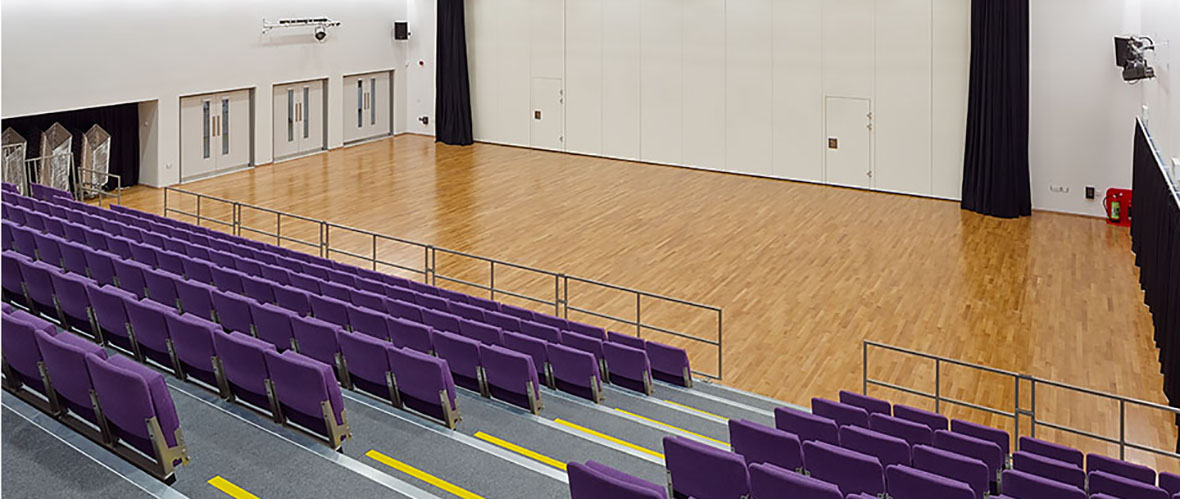New construction ideas for schools and universities
As one of Australia’s biggest and most competitive industries, the education sector is becoming increasingly focussed on delivering the best possible experience for students.
Universities are now pushing the boundaries in their quest to attract domestic and international students, competing in a global marketplace which is increasingly connected to online education resources. For example, a student from a regional town in Australia might find it more appealing to live stream online courses delivered by Harvard professors than travel into a city campus.
While institutions are continuously innovating to improve teaching methods, the physical campus environment is becoming increasingly recognised for its role in supporting an enriched teaching and learning experience for students and staff. As such, it is crucial for these institutions to maintain a superior campus environment through innovative upgrades and extensions while limiting disruption to teaching. The use of timber for these campus improvements offers an ideal solution for universities and schools during these periods of transition.
A speedy build
The ability to largely prefabricate timber projects off-site enables a much quicker build, while maintaining a high level of accuracy. Highly engineered and planned in detail, timber construction allows the location of windows, lights and power sockets to be pre-determined, which reduces the amount of time on site. This allows the vast majority of a build to be completed in non-term time at the end of the academic year, helping to minimise disruption and safety risks to students and staff.
Schools are also taking advantage of the benefits of a speedier build. AECOM provided multidisciplinary engineering services for the William Perkin Church of England High School in London, which was the largest timber building in the UK at its time of construction. Originally planned to be built using concrete, timber was chosen due to the time efficiencies it would unlock. The four-storey school was assembled in just 19 weeks and opened its doors to students two months ahead of schedule.
Environmentally-minded
The environmental benefits of timber are also an incentive to education providers as the younger generations take a more considered view of their impact on the environment. Sustainability is now a key driver for universities, with many making ambitious commitments to reduce their carbon footprint. For example, as part of its 2016-2020 Sustainability Plan, the University of Melbourne is exploring opportunities to transition to zero emissions electricity by 2020, with the longer term aspiration to become carbon neutral by 2030. In comparison to concrete, timber construction offers a significant reduction in embodied carbon – that is the carbon generated through the extraction, processing and transport of a material. Using timber for the construction of the William Perkin school saved approximately 4,400 tonnes of CO2 (including sequestration) – that is equivalent to 1424 return flights from Sydney to London!
Building up, not out
In the push to maximise existing property assets in central city locations, timber can provide a lightweight extension to an existing university building. At 20 percent of the weight of concrete with a similar strength to weight ratio, building in timber allows us to build higher than we could using any other form of construction, unlocking additional teaching space, research areas and student accommodation in desirable locations.
Timber also provides a significant opportunity to increase capacity of schools in central locations. Analysis by the Grattan Institute predicts that up to 220 new schools will be needed in Victoria alone to meet a 19 percent increase in school students by 2026. With a lack of affordable and available land in cities, timber can provide vertical extensions to existing inner city schools, and could also be used in the construction of a new wave of vertical schools to maximise teaching space.
A safe alternative
A common perception is that timber is more susceptible to fire than more traditional forms of construction. With the recent changes to the Building Code of Australia (2016), the use of fire resistant timber construction is acceptable as a means of providing structure to buildings that previously required non-combustible materials. The use of timber in this way requires inclusion of sprinkler suppression to reduce the intensity of fires to which the timber may be exposed. The large timbers used in these projects also offer excellent inherent fire resistance as the outer layer chars and insulates the rest of the beam.
By thinking more broadly beyond traditional forms of construction, not only can we deliver efficiency and sustainability benefits, we can also re-imagine the scale and design of our existing building assets which future generations of students will enjoy.
Marc Colella is practice lead of AECOM’s building structures group in Australia & New Zealand
Nick Hewson is a senior structural engineer at AECOM based in Melbourne.
